The Historical Cabinets
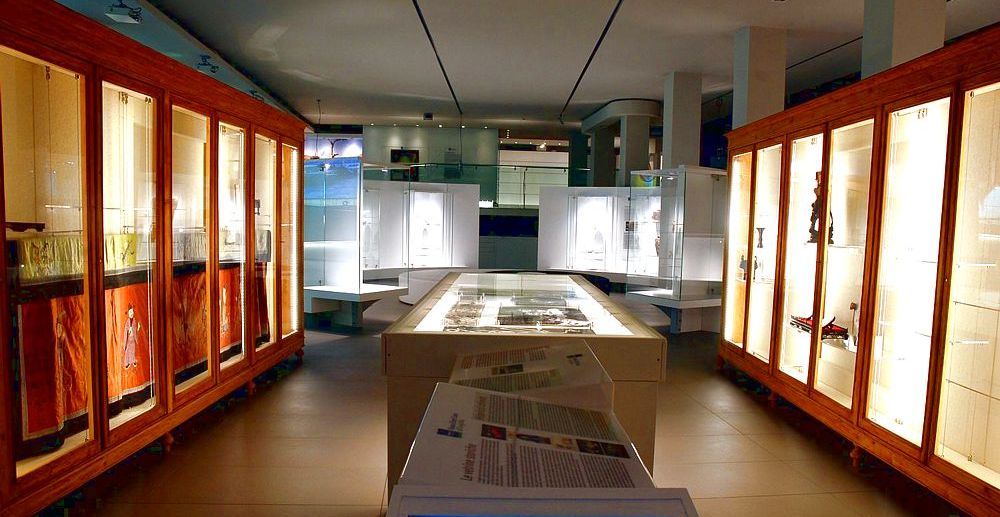
Prof. Nicoletta Celli
These twin cabinets – an arrangement borrowed from the previous museum layout – contain an array of different types of objects, some of which made specifically for the Western market. Taken as a whole, these objects illustrate aspects of daily life, beliefs and artistic traditions in China that developed over the last two dynasties, Ming and Qing. This motley collection includes luxury items, as well as more commercial types of handcrafted objects.
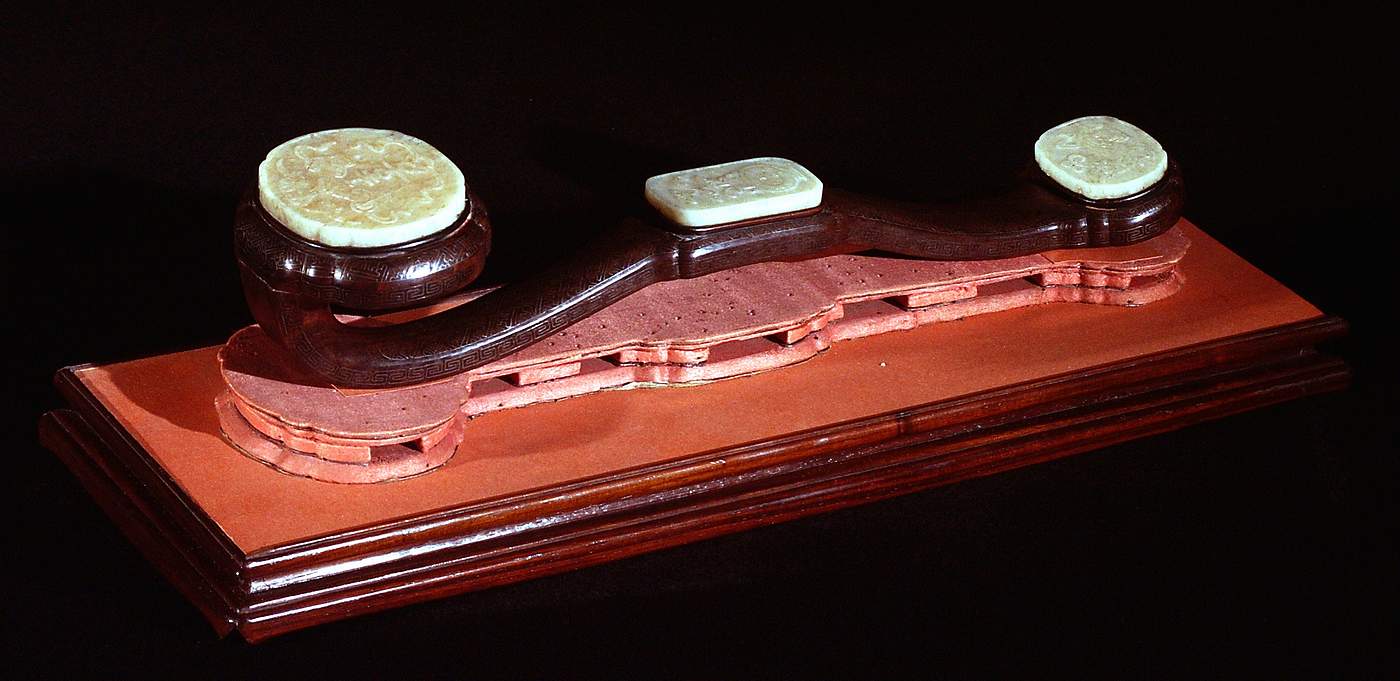
Ruyi sceptre (Qing Dynasty)
The cabinet on the right displays symbols of prestige and power, such as the embroidered silk rank badges (buzi 补子) which were sewn onto the costumes of civil and military officials, or the curved ceremonial scepter (ruyi 如意) decorated with images of good fortune.
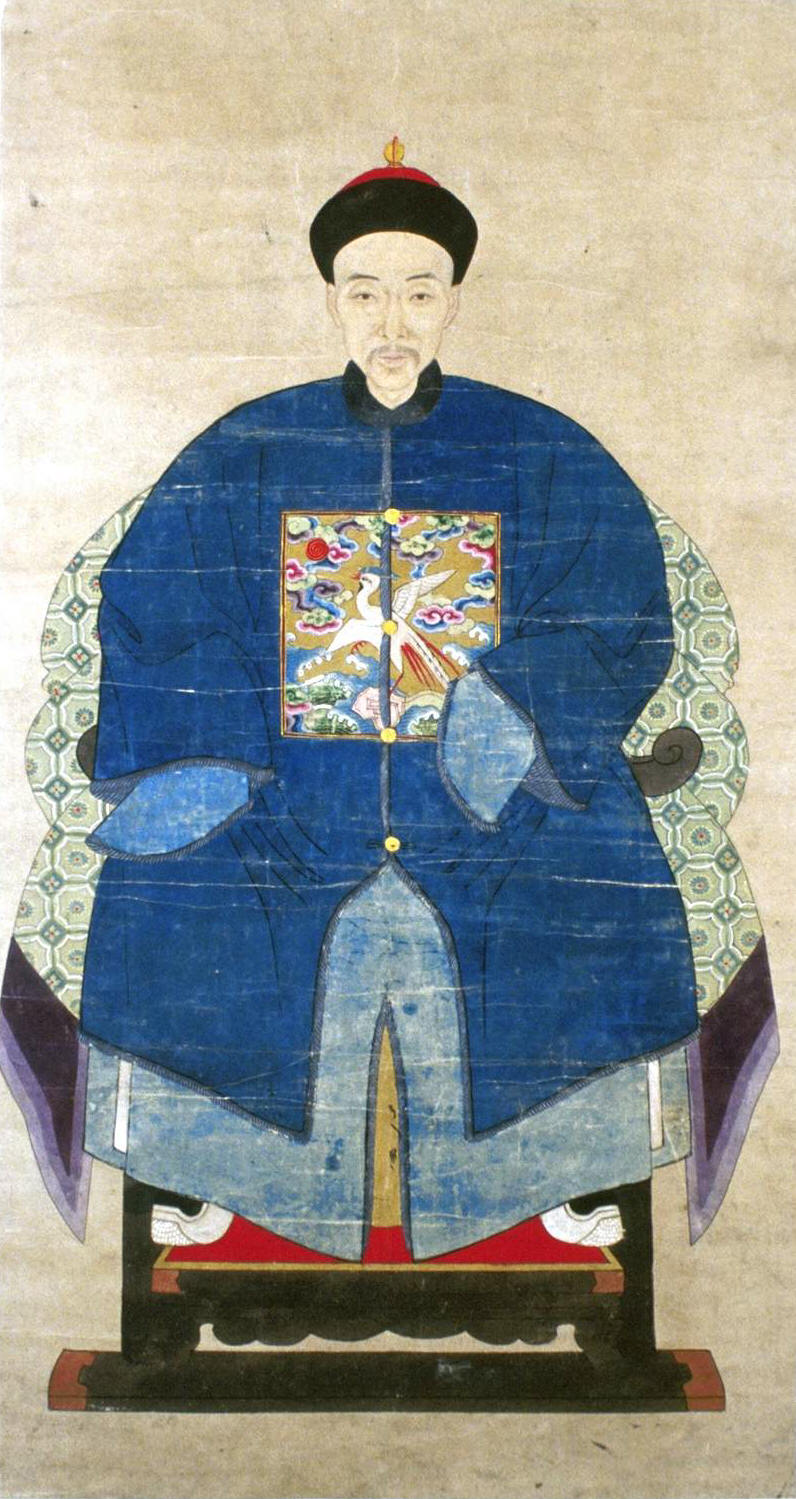
Portrait of an ancestor
The large male portrait is an example of the so-called ancestor portraits commissioned from specialized workshops and painted according to a pre-established model. Great care was taken to make the face lifelike, since family members were naturally anxious that their prayers should reach the desired destination. The clothing, jewelry and rank badges were minor details and were added according to the client’s pocket and often bore no relation to the true status of the deceased.
The group of instruments used in writing and painting, consisting of a brush, ink, inkstone and paper, exemplify the “four treasures of the scholar’s study” (wenfang sibao 文房四宝), the emblem of the literati, who set great store by beautiful calligraphy and painting.

Wedding procession
This is also the natural context of the modern copies of ancient ritual bronzes, which were objects of study and admiration by Chinese scholars and often part of a study’s furnishings. Two carved items recall the long history of woodblock printing, which was a popular medium in China for several centuries.
As the technique was refined, it gave rise from the sixteenth century to an extraordinary flourishing of printed books and reproductions of artworks, making these objects available to more and more people. One of the articles designed for export to Europe is a painting of a group of musicians playing instruments similar to those exhibited.
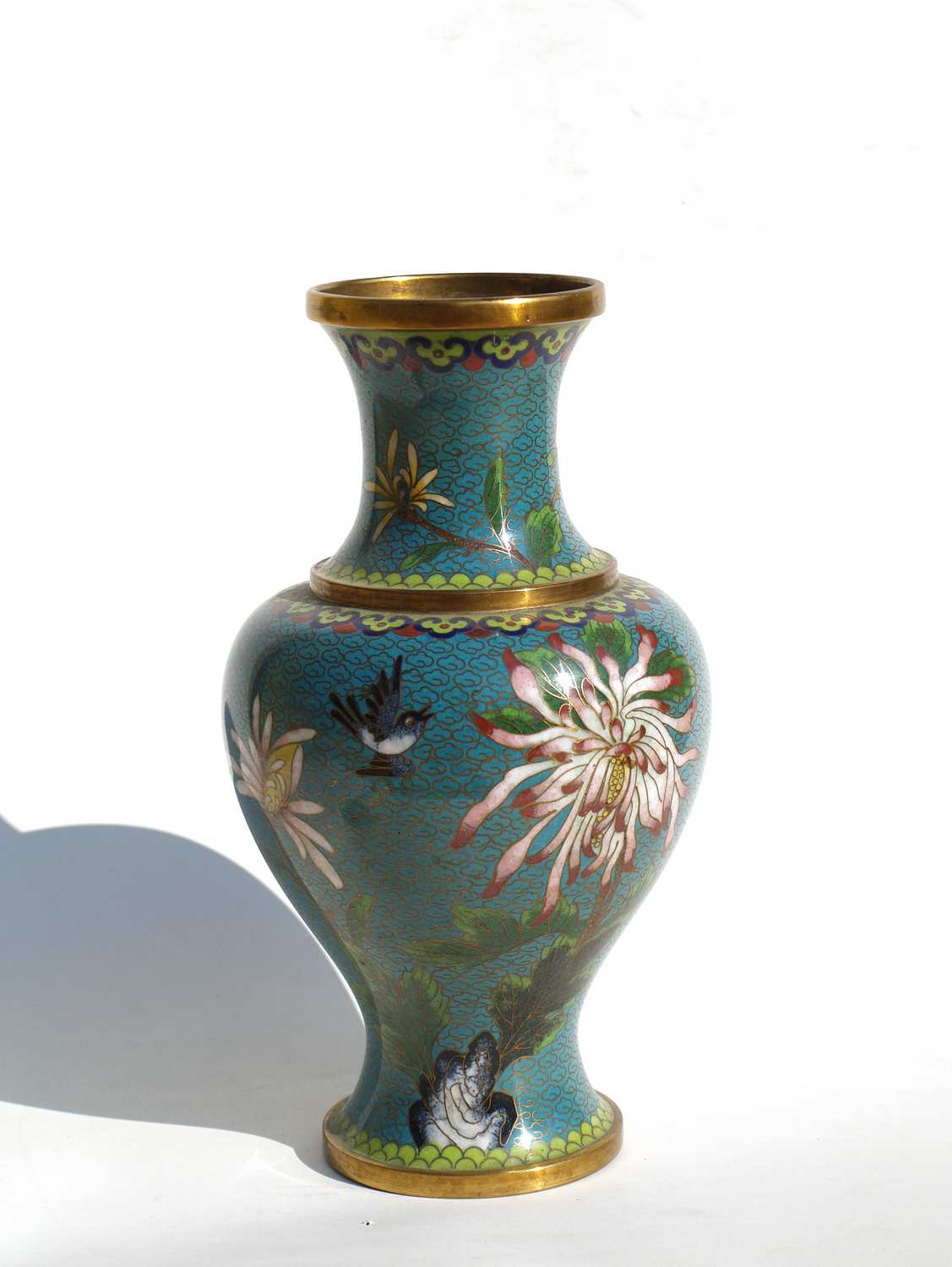
Vase cloisonné
The cabinet on the left contains a fine silk embroidered panel commissioned by a group of people and given to their benefactor in thanks. Other objects illustrate one of the most important aspects of Chinese luxury craftsmanship, cloisonné enamels, which in this case used a technique imported from the West.
The elegant hairpins, with their precious decorations, were used to embellish the sophisticated hairstyles which have been the pride of Chinese women since ancient times. Noblewomen normally changed their hairpins to match the season: jade for spring and summer, while gold was more suitable for autumn and winter.
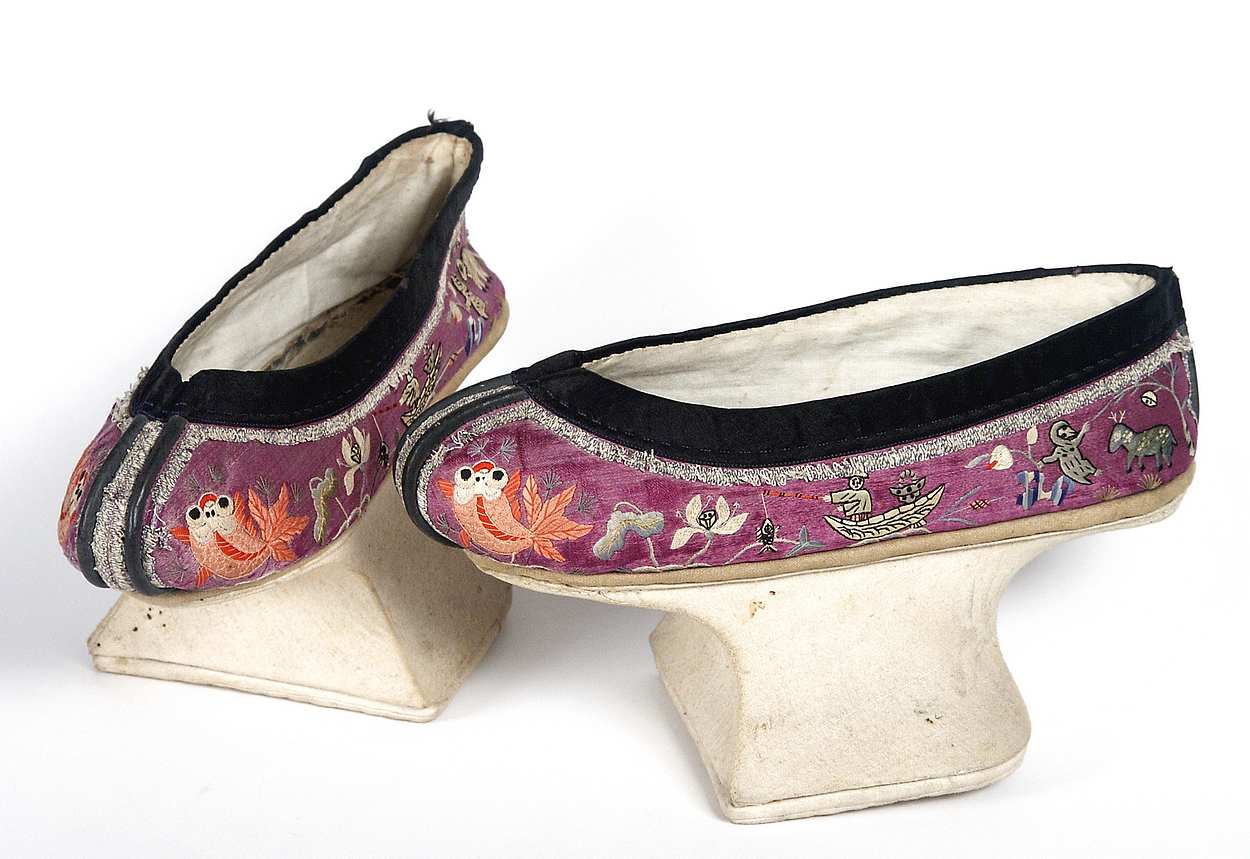
Shoes (mati)
Platform shoes were not strictly speaking part of Chinese tradition, having been introduced by Manchu noblewomen to make them appear taller, although the average local woman was already shorter.
Lastly, tablets commemorating the ancestors (zuzong paiwei 祖宗牌位) and a sculpture depicting the “boat of the luohans” allude to ancestor worship and folk religion, respectively.

